“Ultrasound is the stethoscope for the 21st century,” says Dr. Doewe Kits, an emergency room physician in Brooks.
“What ultrasound allows us to do is look inside and you can see exactly what’s going on. It’s a game changer,” adds Mark Bromley, course director for the EDE Point-of-Care Ultrasound Course.
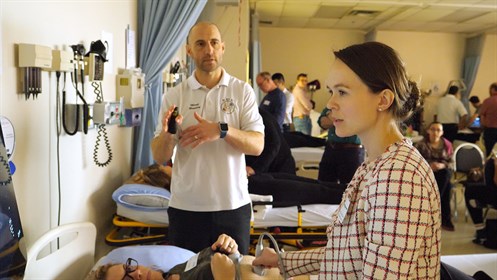
For rural physicians working in emergency, ultrasound is a skill that can greatly improve patient care. So, it’s no wonder that registration for the EDE Point-of-Care Ultrasound Course in Brooks filled up in just three days. Physicians saved both time and travel costs because it was being held right in their own backyard. Plus, financial support provided by RhPAP allowed them to attend at a discount rate.
“Amazing. I love it!” says Dr. Gita Ersh, an emergency room physician in Strathmore. “It’s so nice that it’s being offered to us rural physicians.”
Dr. Doewe Kits says, “This is a great opportunity. You know we are very grateful for the sponsorship that we got. I think the price was cut in half for us as physicians.”
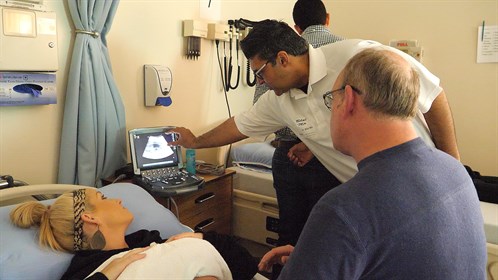
What ultrasound allows us to do is look inside and you can see exactly what’s going on. It’s a game changer. — Mark Bromley, course director for the EDE Point-of-Care Ultrasound Course
The 17 attending rural physicians came prepared. In advance, they read text and watched lectures online so that they could dedicate this day to hands-on training. The full-day course was held at the Brooks Campus of Medicine Hat College.
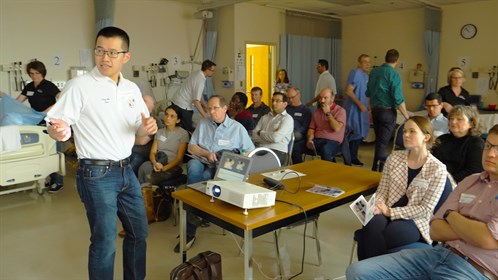
Guiding them was a team of experts that included RhPAP Board Director Dr. Rob Warren.
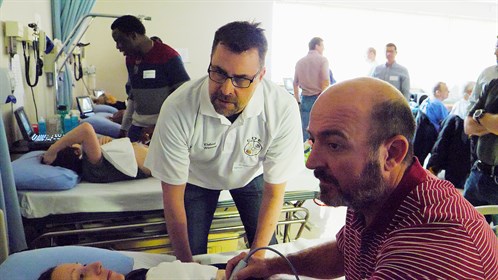
Dr. Gita Ersh says, “Being able to do ultrasound is a life-saving skill. We see many elderly individuals that we always want to rule in or rule out abdominal aortic aneurysm or fluid in the belly and it’s going to be essential.”
Dr. Stefan Badenhorst, an ER physician in both Brooks and Strathmore, adds, “It will definitely help to answer a lot of the questions you have with certain patients that you want some answers immediately. And this will be just that extra tool to help you make that imminent decision.”
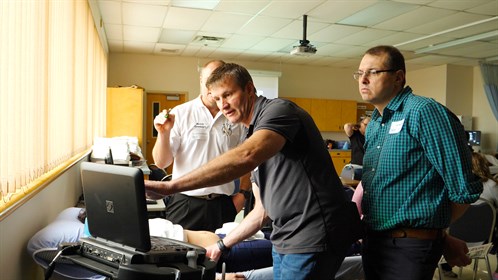

Take the scenario of a young person in a traffic accident. Is there internal bleeding? Young people can often look good until they suddenly crash.
Mark Bromley says, “With ultrasound what we can actually do is look right inside the patient and we can see if there is any bleeding going on inside the abdomen. With that information they can say even though this patient looks pretty good, they’re actually bleeding inside the abdomen. That blood shouldn’t be there. This is a sick young person. I need to get them to the city to get this sorted out.”
“Having the ability to quickly exclude life threatening problems or diagnose life threatening problems for us as physicians is very reassuring.” says Dr. Doewe Kits.
RhPAP also supplied funding for the models. Nothing like a little ultrasound humour to keep them engaged. Dr. Gita Ersh smiles as she looks at the ultrasound for a younger female model and says ,“Two babies!”. Then she quickly adds, “Just kidding!”
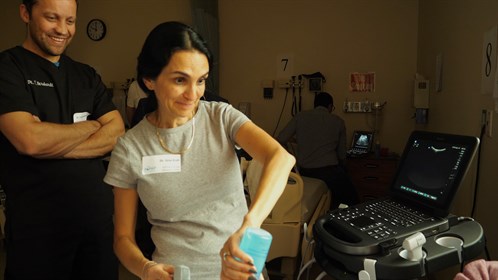
Going forward, the physicians attending the course will have the opportunity to take advanced ultrasound training. And why not, ultrasound provides so much peace of mind for both patients and physicians.
Dr. Doewe Kits says “All of this in the end benefit patient care and benefit our practices in the sense that it gives us confidence to do what we need to do on a daily basis.”
